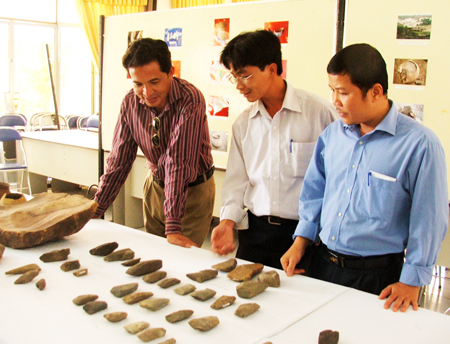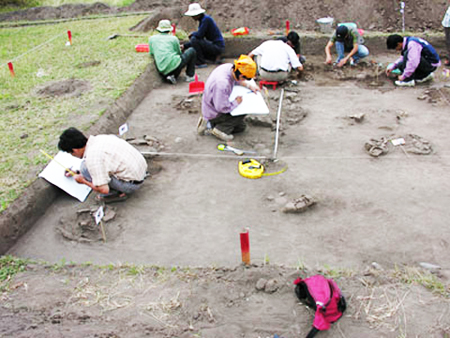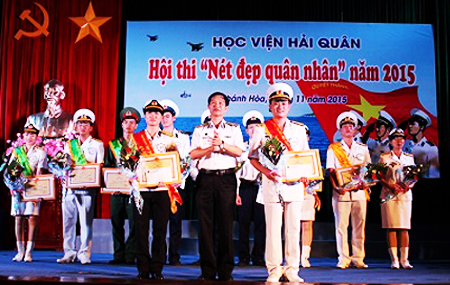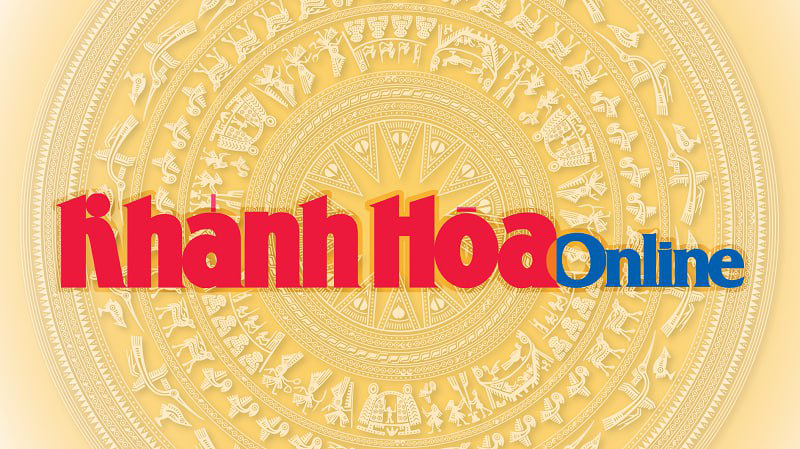
The provincial-level project on archaeology about the prehistory and protohistory in Khanh Hoa is the first project which has systematized the relics and vestiges of the prehistory and protohistory in Khanh Hoa. The project's results will be used to issue monographs.
The provincial-level project on archaeology about the prehistory and protohistory in Khanh Hoa is the first project which has systematized the relics and vestiges of the prehistory and protohistory in Khanh Hoa. The project’s results will be used to issue monographs.
Relics with distinctive attributes
The project subdivided systematically the archaeological vestiges as well as discovered the ancient cultures in Khanh Hoa, such as Xom Con Culture (3,000 to 4,000 years ago), Sa Huynh Culture and Dong Son Culture (some centuries Before Christ).
 |
| Some objects excavated from Vinh Yen Archaeological Relic (Van Thanh, Van Ninh) |
The relics in Khanh Hoa include the ones on the edge of Cam Ranh Bay (Xom Con, Hoa Do 5A, Hon Lao, Go Mieu, Go Dau, Binh Hung, Binh Ba, Rung Cam, Van Tu Dong, Trang Chay, Vinh Hai, Go Diep, Suoi Cam); the ones edge of Nha Trang Bay (Bich Dam, Bai Tru, Dam Gia); the ones in Van Phong Bay (Vinh Yen, Son Dung, Co Don Hill, Suoi Lon Lake); Ho Diem Relic and Dien Son jar burials. Some othe relics are Dong Son bronze drums in Nha Trang City and Ninh Hoa Town, Khanh Son lithophone in Doc Gao Relic.
On the Spratly Islands, the researchers also excavated many pieces of pottery of the prehistory and protohistory together with many objects made of glazed terra-cotta and porcelain of the period from the 6th to 10th century. The features of the pottery of the prehistory and protohistory are porous, rough, light, and thin. They were made with a not high firing temperature.
 |
| Excavating Hoa Diem Archaeological Relic in 2007. (Photo: Khanh Hoa Provincial Museum) |
Most of the vestiges of the prehistory and protohistory found in Khanh Hoa are located near the sea. The exploitation of marine resources played an important role in the life of ancient people in Khanh Hoa throughout the prehistory and protohistory.
Having cultural exchanges
The relics of the prehistory and protohistory in Khanh Hoa are made of stone, pottery and metal. While the pottery of the prehistory has simple designs, the ones of the protohistory have more sophisticated designs. The stone-made objects also show a difference between the two cultures: Xom Con and Hoa Diem. The stone-made things in the time of Xom Con Culture are made of bad materials; focus more on practicability and less on beautifulness. In Hoa Diem Culture, copper and iron appeared so most of stone objects were no longer used. The discovered metal things show that ancient people in Khanh Hoa knew how to make iron and copper stuffs.
In addition, the researchers also found many beautiful objects made of gemstones, glass, gold and seashells.
Thanks to the relics excavated, the researchers could discover the life of ancient people in the prehistory and protohistory. According to Associate Professor – PhD Dang Van Thang, Ho Chi Minh City University of Social Sciences and Humanity, the pottery coffins found in Khanh Hoa attracted the archaeologist because of their unique features. These burials together with the personal possessions buried with the dead show the respect of ancient people in Khanh Hoa towards the spiritual world.
This project on archaeological research showed the cultural exchanges of ancient people in the prehistory and protohistory in Khanh Hoa. Some evidences of these cultural exchanges are Dong Son bronze drum (exchange with the north of Vietnam), Dien Son jar burials (exchange with the mid-central region of Vietnam) and jewelries found at Hoa Diem (exchanges with India, Middle East, Philippines). The ancient people in Khanh Hoa exchanged culture mainly by sea route.
Basing on the researches’ results, the project suggested the resolutions for conserving and upholding the values of the archaeological relics in Khanh Hoa. Some of the outstanding relics were proposed by the provincial-level council of science and technology to be built as outdoor museums. In this way, the relics can be preserved and excavated to diffuse and uphold their values.
N.D
Translated by H.N










